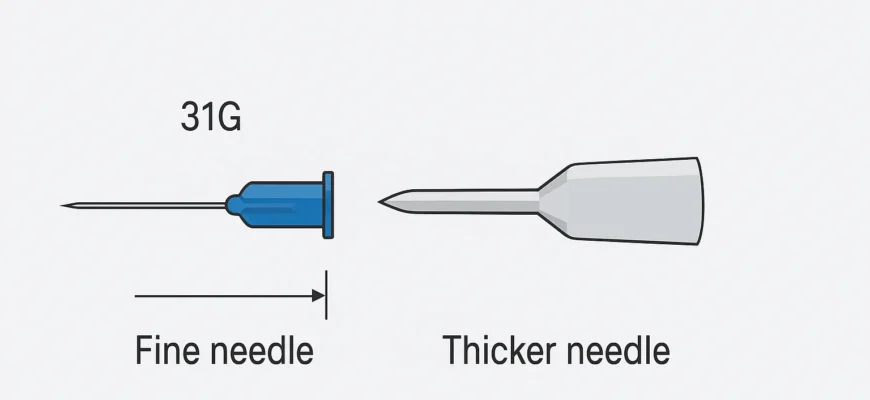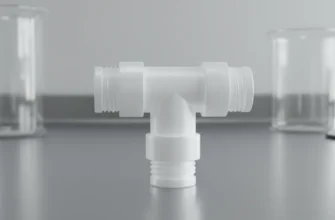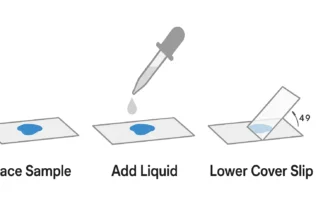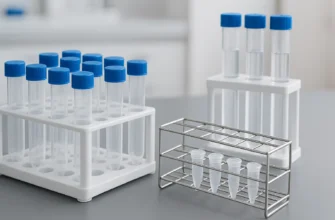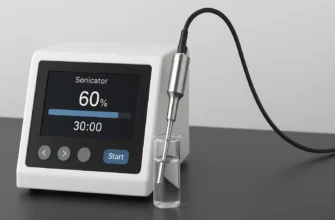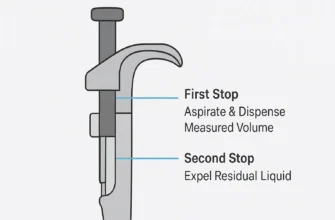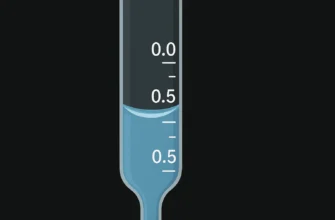Embracing Comfort and Precision in Injections
For millions who self-administer medication, the routine of an injection can be a source of consistent stress. The brief sting, the apprehension, the desire for it to be over quickly – these are universal experiences. Yet, significant advancements in medical technology have been quietly transforming this process. The key lies in a simple but profound innovation: the small gauge syringe. By choosing finer needles, users can dramatically enhance comfort, minimize pain, and achieve a level of precision that was once difficult to attain outside of a clinical setting. This guide is dedicated to demystifying the world of small gauge syringes, empowering you to make informed choices that prioritize both your well-being and the efficacy of your treatment.
The Common Challenge: Injection Anxiety and Discomfort
Whether for managing diabetes, fertility treatments, or other chronic conditions, the need for regular injections is a reality for many. This routine can often be accompanied by anxiety, stemming from the fear of pain or discomfort. This “needle phobia” is not just a psychological hurdle; it can impact treatment adherence. A negative experience with a larger, more painful needle can create hesitation, potentially leading to missed or delayed doses. The physical discomfort, bruising, or skin irritation associated with improper needle gauge selection can further compound this challenge, turning a necessary medical task into a dreaded one.
Why “Finer Needles” Make a Difference: A Glimpse into Small Gauge Benefits
The term “small gauge” refers to needles with a smaller outer diameter. This simple physical difference has a significant impact on the user experience. A finer hypodermic needle displaces less tissue damage as it enters the skin, resulting in a much gentler puncture. This translates directly to less pain, reduced bleeding or bruising at the injection site, and quicker healing. Furthermore, the precision offered by these needles allows for more accurate dosing, which is especially critical for potent medications administered in small volumes. For any user, but particularly for those on a long-term injection regimen, these benefits can fundamentally change their relationship with their treatment.
What This Guide Will Cover: Your Path to Informed Choices
This ultimate guide will provide a comprehensive roadmap to understanding and selecting the right small gauge syringe for your needs. We will break down the essential terminology, from needle gauge and needle length to syringe size and bevel design. You will learn about the distinct advantages of using finer needles, explore their diverse applications across healthcare, and gain practical advice on choosing the perfect syringe. Finally, we will cover best practices for injection technique and safe disposal, equipping you with the knowledge to manage your healthcare with confidence and comfort.
Understanding Needle Gauge: The Key to Finer Injections
Navigating the specifications of a syringe can feel overwhelming, but the most crucial factor for comfort is the needle gauge. This single number dictates the thickness of the syringe needle and is the primary determinant of the physical sensation of an injection.
What is Needle Gauge? Deciphering the Numbers
Needle gauge is a measurement of the outer diameter of the needle. The system works on an inverse scale: the higher the gauge number, the thinner the needle. For instance, a 31-gauge (31G) needle is significantly finer and has a smaller diameter than a 25-gauge (25G) needle. This is the single most important concept to grasp when selecting a syringe for comfort. Small gauge needles typically range from 25G to 34G. The trend toward ever-finer needles is driven by patient comfort; a recent study found that injecting with a 34-gauge needle caused significantly less pain (average pain level 0.49) compared to a 33-gauge needle (average pain level 0.79 on a 0-10 scale), demonstrating that even a single-gauge difference matters.
This inverse relationship has its roots in 19th-century wire manufacturing, where wire was drawn through progressively smaller holes. Each drawing step received a higher gauge number, making the wire thinner. When the medical industry began producing fine stainless steel tubing for hypodermic needles, it directly adopted this gauge numbering method.
Visual Identification: Color Coding for Needle Gauges
To simplify identification and reduce errors, needle manufacturers adhere to an internationally recognized color coding system established by ISO 6009. The hub of the needle – the plastic part that connects to the syringe barrel – is colored to correspond with its gauge. For example:
-
25G: Orange
-
27G: Medium grey
-
30G: Yellow
-
31G: White
-
33G: Black
-
34G: Orange
While it’s always essential to read the packaging, this color-coding provides a quick visual confirmation for healthcare professionals and users alike, ensuring the correct needle is selected for the task.
Anatomy of a Hypodermic Needle: Key Components
A hypodermic needle is more than just a thin tube. It consists of three main parts:
The Hub: The plastic fitting that attaches the needle to the syringe barrel, typically color-coded according to ISO 6009 standards.
The Shaft: The long, slender metal tube made of stainless steel that delivers the medication. Its thickness is defined by the needle gauge, and its length is measured in inches or millimeters.
The Bevel: The angled, sharp tip of the needle. The design of the bevel is critical for a smooth entry into the skin, minimizing tissue damage and pain. High-quality needles feature a multi-faceted bevel (such as 5-bevel designs) designed to slice through tissue cleanly rather than tearing it.
The Unparalleled Advantages of Small Gauge Syringes
Choosing a syringe with a fine gauge needle is not just about preference; it offers tangible medical and psychological benefits that improve the entire injection process. These advantages are a primary reason the global market for special purpose needles is projected to reach $20.4 billion to $23.31 billion by 2030, reflecting growing demand for specialized, patient-centric designs.
Enhanced Comfort and Minimized Pain
The most immediate and appreciated benefit of a small gauge needle is the significant reduction in pain. Because the needle has a smaller diameter, it creates a much smaller puncture wound and causes less trauma to skin and underlying tissue. This minimizes the “sting” associated with injections, making the experience far more tolerable. For patients who require daily injections, such as those using an insulin syringe, this reduction in pain is transformative. Research demonstrates that a gauge size of 30 or thinner may minimize patient discomfort during injections. It lowers anxiety, improves the psychological outlook on treatment, and boosts adherence to prescribed medical regimens.
Superior Precision and Dosage Accuracy
Many modern medications are highly potent and require exact dosing in very small volumes. Small gauge syringes are often paired with smaller syringe barrels, marked in precise increments of milliliters (mL) or cubic centimeters (cc). This combination allows for exceptional accuracy when drawing up and administering medication. A 1 mL or 0.5 mL measuring syringe with clear, easy-to-read markings ensures that the user can deliver the exact dose prescribed by their healthcare provider, which is critical for treatment efficacy and safety.
Reduced Risk of Leakage and Bruising
A finer needle creates a smaller entry point in the skin, which closes more quickly after the needle is withdrawn. This helps prevent medication from leaking back out of the injection site, ensuring the full dose is absorbed. Studies show that a 90-degree needle insertion angle causes less leakage than an angled (~45°) insertion, and waiting at least 3 seconds after injection before needle withdrawal reduces leakage. The minimal tissue trauma also leads to a lower incidence of bruising and bleeding. Larger needles are more likely to damage small blood vessels beneath the skin, resulting in noticeable and sometimes painful bruises. By minimizing this damage, small gauge needles contribute to a cleaner injection site and a more comfortable recovery.
Choosing Your Small Gauge Syringe: A Practical Selection Guide
Selecting the appropriate syringe involves balancing several factors, including the medication itself, the injection route, and your personal anatomy. A thoughtful choice ensures maximum comfort, safety, and effectiveness.
Matching Needle Gauge to Medication and Injection Route
The viscosity (thickness) of the medication is a primary factor in selecting a needle gauge.
Thin, watery medications (e.g., insulin, most vaccines, hormonal treatments) flow easily through high-gauge (thinner) needles like 29G, 30G, or 31G.
Thicker, more viscous medications (e.g., progesterone in oil, some oil-based hormones, antibiotics) may require a slightly lower gauge, such as 25G or 27G, to allow for a reasonable flow rate without excessive pressure. For progesterone in oil injections, it’s common to use an 18-gauge needle to draw the medication into the syringe, then switch to a 22 or 23-gauge needle (1 to 1.5 inches long) for the actual intramuscular injection.
The injection route is also critical. Intradermal injections use very fine needles (26-28G), while subcutaneous injections are well-suited for 25-31G needles.
Understanding Needle Wall Thickness: Regular, Thin, Extra-Thin, and Ultra-Thin
While gauge defines the outer diameter, the inner diameter of the needle depends on the wall thickness. Needles come in four wall types: regular wall, thin wall, extra-thin wall, and ultra-thin wall.
A thinner wall allows a larger inner diameter for the same gauge, which improves flow rate and reduces the extrusion force needed to inject viscous fluids. For example, a 30G ultra-thin wall needle has a similar-sized lumen to a 27G regular wall needle, providing better flow while maintaining patient comfort. Research shows that thin wall versus regular wall needles can differ significantly in flow rates: 20G thin wall needles flow 7.7 mL/min faster than regular wall, and 21G thin wall needles flow 2.9 mL/min faster.
However, thicker walls provide additional sturdiness and needle durability. Long needles with a regular wall are less likely to flex than thin wall or ultra-thin wall needles. The choice depends on your specific application and medication viscosity.
Selecting the Right Needle Length
Needle length determines how deep the medication is delivered. This choice depends on the injection type and the patient’s body mass.
Subcutaneous Injections: Delivered into the fatty tissue just beneath the skin. A shorter needle length, typically ranging from 4 mm (5/16 inch) to 8 mm (5/8 inch), is ideal. A 4 to 6 mm needle is a common and effective choice for most adults. For very young children (≤6 years) and very thin adults (BMI <19 kg/m²), a skinfold should be lifted and a 4 mm needle inserted perpendicularly.
Intramuscular Injections: Delivered directly into a muscle. These require a longer needle, usually 1 inch to 1.5 inches (25 mm to 38 mm), to bypass the subcutaneous fat. The appropriate length depends on body weight and BMI. For women with BMI ≥25, needles longer than 38 mm (1.5 inches) may be needed for intramuscular injections, particularly in the dorsogluteal region. Always consult a healthcare professional for the correct length for intramuscular injections.
Syringe Barrel Size: Pairing with Small Gauge Needles
The syringe size, specifically the volume of the barrel, should match your required dose. Syringes come in various capacities, measured in milliliters (mL) or cubic centimeters (cc), which are equivalent measurements (1 mL = 1 cc). For small, precise doses, use a smaller capacity syringe (e.g., 0.3 mL, 0.5 mL, or 1 mL). Using a large syringe for a small dose makes accurate measurement difficult.
Insulin syringes are specifically designed for small, precise volumes and are marked in units rather than milliliters:
-
0.3 mL (30 units): For doses of 30 units or less
-
0.5 mL (50 units): For doses between 30 and 50 units
-
1 mL (100 units): For doses up to 100 units
For U100 insulin, 1 mL equals 100 units, so 1 unit equals 0.01 mL.
Syringe Connection Types: Ensuring Compatibility
Most modern syringes use a standardized connection point called a Luer lock or Luer slip.
Luer Lock: Features a threaded collar that allows the needle hub to be screwed on securely using a Luer lock connection, preventing accidental detachment. This is the preferred type for most applications, particularly when higher pressures are involved or when administering viscous medications.
Luer Slip (or Slip Tip): Relies on a friction fit. The needle hub is pushed onto the tapered syringe tip. While convenient and allowing for faster attachment, it is less secure than a Luer lock.
Both connection types conform to ISO 80369 standards, ensuring compatibility between different manufacturers’ syringes and needles. Ensure your chosen needles and syringes share a compatible connection type. If needle packaging states “Luer Lock Fitting,” it can typically be used with both Luer Lock and Luer Slip syringes.
Understanding Needle Point Style and Bevel
The sharpness and shape of the needle’s tip, or bevel, play a significant role in comfort. High-quality needles feature a multi-faceted bevel (such as 5-bevel designs) designed to slice through tissue cleanly rather than tearing it. This advanced design minimizes tissue drag and reduces the force required for insertion, resulting in a smoother, less painful injection for the user. When purchasing needles, look for brands that emphasize their bevel technology for patient comfort. Research from companies like Hamilton Company and available through distributors like Fisher Scientific demonstrates that advanced bevel designs significantly improve the injection experience.
Real-World Applications: Where Small Gauge Needles Shine
The benefits of small gauge syringes extend across numerous fields of medicine and research, improving outcomes for both human and animal injections.
Home Healthcare and Self-Administration
This is where small gauge needles have the most significant daily impact. Patients managing diabetes with insulin, undergoing fertility treatments with IVF medications (such as Gonal-f pens or Leuprolide acetate), or administering biologic drugs for autoimmune conditions rely on these needles for comfortable and frequent injections. The trend towards even finer needles is clear, with data showing that in the APAC insulin syringe market, the >33G needle category is expected to grow at the fastest rate, with the market projected to reach $848.6 million by 2034.
Specialized Medical and Aesthetic Procedures
In clinical settings, precision and minimal patient discomfort are paramount. Dermatologists use fine needles (30G to 34G) for Botox syringes and dermal filler injections to ensure accuracy and reduce bruising. These procedures often utilize specialized needle kits designed for aesthetic applications. In ophthalmology, extremely delicate procedures like intravitreal injections benefit from ultra-fine needles, with research demonstrating that a gauge size of 30 or thinner may minimize patient discomfort related to anti-VEGF therapy.
Pediatric and Geriatric Care
Children and the elderly often have more delicate skin and lower pain thresholds. Using the smallest possible gauge needle is a standard practice in pediatric and geriatric healthcare to minimize fear and discomfort during vaccine injections or medication administration. The psychological benefit of a less painful experience is as important as the physical one in these sensitive populations.
Veterinary Medicine: Gentle Care for Animal Injections
Animals, like humans, experience pain and stress from injections. Veterinarians use small gauge needles, particularly for vaccinations and insulin administration in smaller animals like cats and dogs, to ensure a calmer and more humane experience. A less traumatic injection helps build trust between the pet, owner, and veterinarian.
Research and Analytical Chemistry
In laboratory settings, precision is everything. Researchers use small gauge syringes and needles (often called microsyringes from manufacturers like Hamilton Company) to handle and inject minute, precise volumes of liquids for experiments in fields like analytical chemistry and molecular biology. Applications include chromatography, where a filter needle may be used to prevent particulate contamination, and various microfluidic applications. The accuracy of these tools is fundamental to achieving reliable scientific results and preventing sample loss.
Best Practices and Troubleshooting for Small Gauge Syringes
Proper technique is essential for maximizing the benefits of fine needles and ensuring a safe, effective injection every time.
Preparing for Your Injection: Essential Steps
Before you begin, gather all your supplies: the syringe and needle, medication vial, alcohol swabs, and a sharps disposal container. Wash your hands thoroughly. Clean the top of the medication vial with an alcohol swab. Draw the correct dose of medication into the syringe barrel, removing any large air bubbles by gently tapping the barrel and pushing the plunger. Finally, clean the injection site with another alcohol swab and let it air dry completely to prevent stinging.
Injecting Thicker Medications with Fine Gauge Needles
While challenging, it is possible to use finer needles for more viscous fluids like progesterone in oil. To do so, inject slowly and apply steady, consistent pressure on the plunger. Pushing too hard or too fast can cause the needle hub to detach from the syringe or increase discomfort. Many users find it helpful to use a larger gauge needle (e.g., 18G or 22G) to draw the medication from the vial and then switch to a smaller gauge needle (e.g., 22G or 25G) for the actual injection. This technique, common with needle kit systems that include removable needles, minimizes discomfort while maintaining the ability to handle viscous medications.
Mastering Injection Technique for Comfort and Efficacy
For subcutaneous injections: The appropriate injection angle and skinfold technique depend on needle length and patient body composition:
-
With 4-5 mm needles: Insert at a 90-degree angle without pinching skin for most adults
-
With 6-8 mm needles: Use a pinched skinfold and insert at a 45-degree angle, or use a 90-degree angle with proper skin pinching
-
Very young children (≤6 years) and thin adults (BMI <19): Always lift a skinfold and insert the needle perpendicularly
Insert the needle with a quick, smooth motion. Inject the medication steadily at a moderate pace. After injection, hold the button or keep pressure on the plunger and wait at least 10 seconds before withdrawing the needle to prevent leakage. Withdraw the needle smoothly and apply gentle pressure with a clean gauze. Avoid rubbing the injection site afterward, as this can cause irritation or bruising.
For intramuscular injections: These require insertion at a 90-degree angle to the skin surface with the skin stretched flat (not pinched). Use the appropriate needle length based on injection site and body mass index. Always consult healthcare professionals for proper intramuscular injection technique.
Safe Disposal of Used Syringes and Needles
Never dispose of loose needles or syringes in the regular trash to prevent needle sticks. Immediately after use, place the entire syringe and needle unit into a dedicated, FDA-cleared sharps disposal container. These containers must be:
-
Made of heavy-duty, puncture-resistant plastic or metal
-
Equipped with a tight-fitting, puncture-resistant lid
-
Leak-resistant with sturdy sides and bottom
-
Properly labeled with biohazard warnings
-
Designed to remain upright and stable during use
When the container is about three-quarters full, seal it and follow your local community guidelines for proper disposal. FDA-cleared sharps containers are available through pharmacies, medical supply companies, healthcare providers, and online retailers.
Conclusion
Choosing the right syringe is a critical yet often overlooked aspect of managing medical treatments at home. By understanding the fundamentals of needle gauge, needle length, syringe size, and connection types like Luer lock versus Luer slip, you can move beyond simply accepting the standard option and start making choices that prioritize your own comfort and precision. A small gauge needle represents more than just a piece of metal; it is a tool that can significantly reduce pain, minimize anxiety, and improve your overall treatment experience.
The key takeaways are clear: a higher gauge number means a thinner, more comfortable needle. The hypodermic needle gauge system works inversely – remember that 34G is thinner than 25G. Match the needle length to the injection type – shorter (4-8 mm) for subcutaneous injections, longer (1-1.5 inches) for intramuscular injections. Consider needle wall thickness (regular, thin, extra-thin, or ultra-thin wall) when dealing with viscous medications. Pair your dose with the smallest appropriate syringe barrel in milliliters or cubic centimeters for maximum accuracy. For insulin administration, use specialized insulin syringes marked in units (30, 50, or 100 units).
By applying this knowledge, you are empowered to have more informed conversations with your healthcare provider about selecting the right hypodermic syringe, replacement syringe needle, or complete needle kit for your specific medication – whether it’s insulin, IVF medications, local anesthetic, or other treatments. Understanding these principles helps you take confident control of your injection routine while minimizing discomfort and maximizing treatment effectiveness.
Always consult with your doctor or pharmacist to confirm the best syringe and needle combination for your specific medication and needs, ensuring your path to wellness is as smooth and comfortable as possible. Thank you for taking the time to learn about proper injection technique – your commitment to understanding these details will make a meaningful difference in your treatment experience and outcomes.

